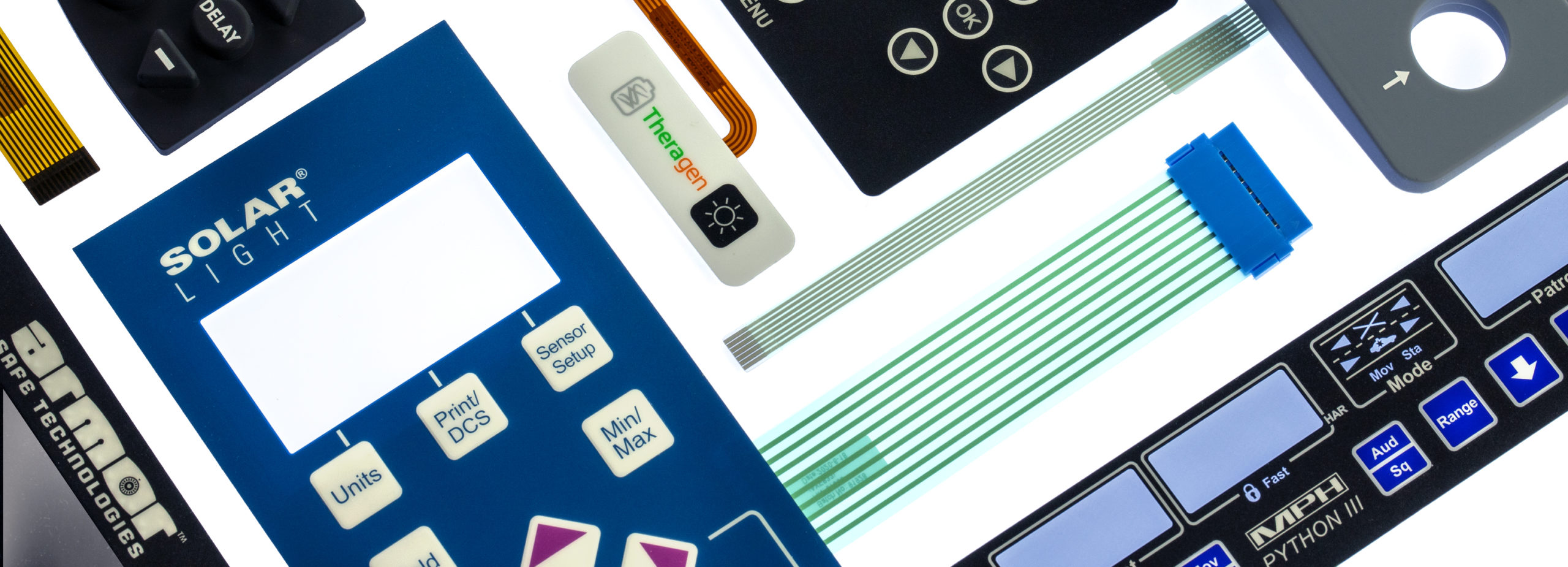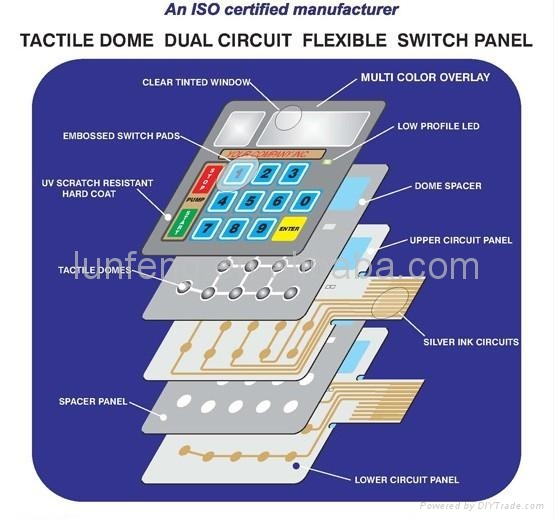Why Membrane Switches are Ideal for Durability and Performance
Wiki Article
Recognizing Membrane Layer Switches: The Secret to Dependable and durable Controls

What Are Membrane Buttons?
Membrane layer buttons are an advanced remedy in the world of interface technology, incorporating functionality and style flawlessly. These tools act as a user interface between customers and electronic systems, incorporating numerous components into a compact layout. Generally created from flexible, slim layers of materials, membrane buttons are created to react to touch, enabling individuals to connect with equipment and electronic devices successfully.The primary aspects of a membrane switch include a printed circuit layer, graphic overlay, and a spacer layer that stops unintended activation. The graphic overlay can be tailored to mirror brand name identification or user choices, improving looks while guaranteeing usability. Membrane switches are generally utilized in various applications, including clinical gadgets, consumer electronics, and commercial devices, owing to their durability and resistance to ecological factors such as moisture and dust.
One of the essential advantages of membrane buttons is their ability to hold up against deterioration, making them optimal for high-traffic atmospheres. Additionally, they are lightweight and need marginal room, enabling cutting-edge layouts in product development. On the whole, membrane layer changes represent a effective and functional selection for modern-day electronic interfaces, marrying technology with user-centric style concepts.
How Membrane Layer Switches Over Work
The procedure of membrane switches over joints on a simple yet effective system that equates user input into electronic signals. When a customer presses the switch, the leading layer deforms, allowing a conductive element in the circuit layer to make call with a corresponding conductive pad on the underside of the visuals overlay.The style of membrane switches can vary, yet they frequently include domes or tactile aspects to give comments to the user, enhancing the general experience - membrane switch. The products made use of in membrane switches, such as polyester or polycarbonate, add to their resilience and resistance to environmental variables, including wetness and dust. Furthermore, the published circuits are generally encapsulated, which secures them from damage gradually.
Advantages of Membrane Layer Switches

Additionally, membrane switches are recognized for their resilience. Built from robust materials, they are immune to dust, wetness, and physical wear, which considerably expands their life expectancy contrasted to typical mechanical switches. This toughness makes them particularly suitable for high-traffic settings and applications calling explanation for longevity.
One more substantial benefit is the convenience of cleansing and maintenance. The smooth surface of membrane switches decreases dust accumulation and is commonly resistant to spills, making them excellent for setups go to the website that call for constant sanitization.
Additionally, membrane layer buttons provide a structured account, causing a thinner design that can be integrated right into various tools without adding bulk. This function not just boosts the aesthetic appeal yet also adds to an extra ergonomic product layout.
Applications of Membrane Layer Buttons
User-friendly and functional, membrane switches find applications throughout a large range of markets, including clinical tools, consumer electronic devices, and industrial tools. In the clinical area, these switches are essential to tools such as diagnostic devices, client tracking systems, and mixture pumps, where reliability and simplicity of cleansing are critical. Their ability to preserve and withstand severe environments capability makes them ideal for such applications.
In consumer electronics, membrane switches are utilized in products like microwaves, cleaning equipments, and push-button controls - membrane switch. Their sleek layout permits for instinctive individual interfaces, improving the total individual experience while giving sturdiness and resistance to damage
Commercial devices also gains from membrane buttons, particularly in control panels for equipment and automation systems. These switches supply defense against dirt and moisture, making sure regular efficiency in tough environments. Their adjustable functions permit suppliers to customize them to details functional requirements, boosting effectiveness and capability.
Selecting the Right Membrane Layer Switch Over
When selecting a membrane button, it is important to take into consideration numerous elements that affect performance and viability for certain applications. The key considerations consist of ecological conditions, tactile comments, durability, and style requirements.
First, evaluate the operating environment; buttons revealed to moisture, chemicals, or severe temperature levels call linked here for specific products to make sure durability and capability. Next, assess the requirement for tactile comments. Depending on individual interaction, some applications may benefit from a responsive feedback to validate activation, while others may like a non-tactile layout for visual reasons.
Durability is one more important factor; membrane buttons need to be designed to stand up to regular use, effects, and abrasion. Make certain the selected button can endure the expected lifecycle, particularly in high-usage circumstances.

Final Thought
In final thought, membrane changes function as crucial elements in the layout of trustworthy and sturdy control systems across numerous sectors. Their compact layout, incorporated with robust building and construction and personalized attributes, boosts customer interaction while making sure long life popular atmospheres. The adaptability of membrane switches over enables customized remedies that satisfy specific operational demands, enhancing their importance in modern-day innovation. As sectors remain to advance, the value of integrating reliable membrane layer switch remedies can not be overstated.
Membrane switches over represent a vital element of contemporary user interface style, mixing capability with strength in numerous applications.Membrane layer switches are an advanced solution in the realm of individual interface modern technology, integrating functionality and layout seamlessly. Usually built from flexible, slim layers of products, membrane layer switches are developed to respond to touch, enabling users to interact with equipment and digital gadgets efficiently.
The layout of membrane switches can vary, however they usually integrate domes or responsive elements to offer feedback to the user, improving the overall experience.In conclusion, membrane changes offer as necessary parts in the design of trusted and sturdy control systems across numerous industries.
Report this wiki page